The Role of Dairy in Norwegian Cooking
44 min read Explore how Norway’s dairy traditions—brunost, rømmegrøt, cultured milks—shape everyday cooking, festive tables, and regional identity, with tips on sourcing, substitutes, and authentic techniques. October 05, 2025 18:07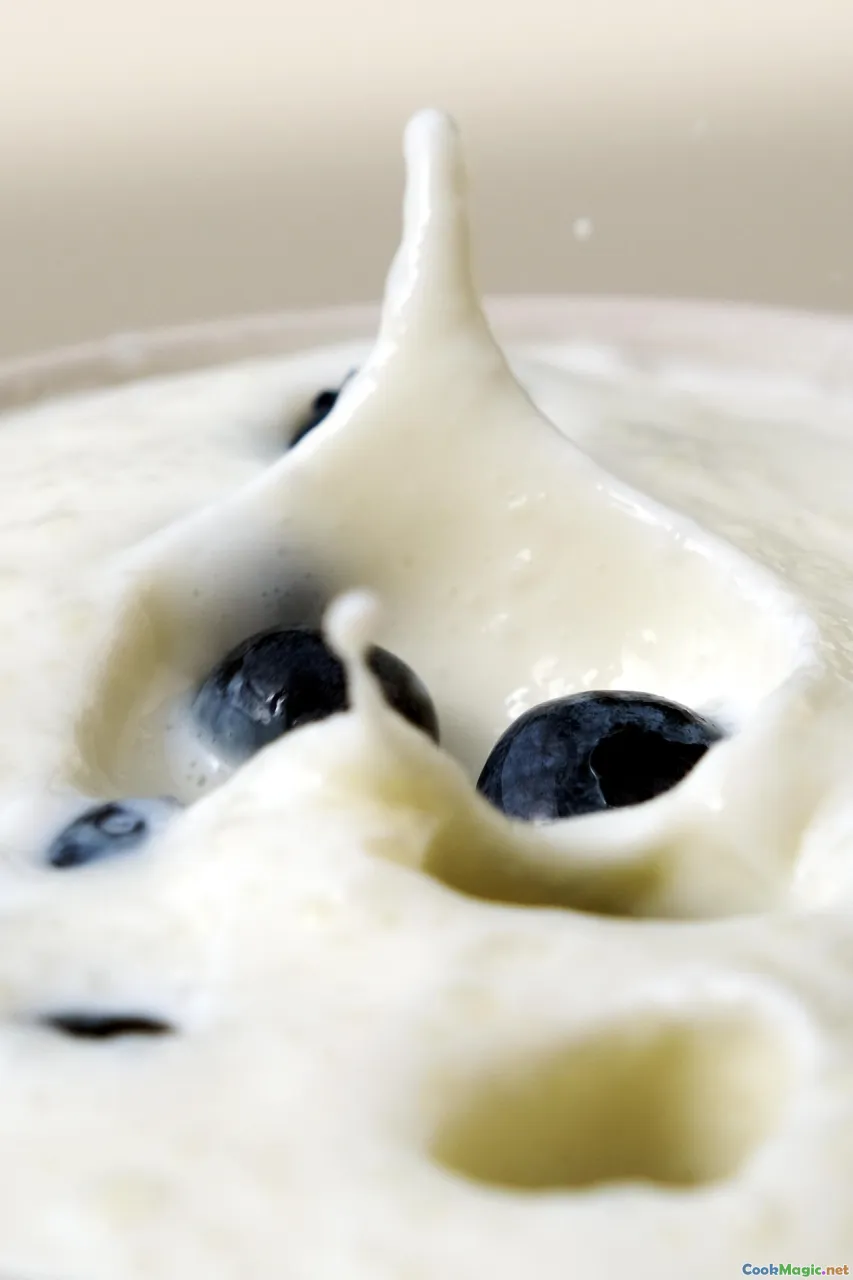
The morning I first tasted warm, still-foaming milk on a summer farm above the Hardangerfjord, the air smelled of spruce resin, wet wool, and the faint caramel of yesterday’s whey simmering down to become brown cheese. A bell clacked once, then again, as a red-and-white cow nosed her way into the milking stall. The farmer’s hands moved with old confidence; the metal pail rang soft with each stream. Outside, the pasture spilled down the mountainside like a tilted quilt stitched from lupine, buttercup, and grass. I remember the first sip of that milk: sweet as clover, a little earthy, richer than anything from a carton. That sip explained the role of dairy in Norwegian cooking more quickly than any history book could. In this northern kitchen, milk is not a neutral background. It is a primary color.
Milk at Latitude: Why Dairy Took Root in the North

Norway’s dairy story begins not in the kitchen but on the land, with altitude and latitude conspiring in favor of grass. The short, bright summers send pastures into a frenzy of growth. The long winters teach thrift. Milk, cream, and whey become both nourishment and insurance, shaped by seasons as much as by taste.
For centuries, Norwegian families practiced transhumance, moving cattle and goats to summer farms called seter or støl. High in the mountains, milk was abundant but fragile. You had to make it last. So the seter kitchens became laboratories of preservation: churning and skimming, culturing and cooking, separating curds from whey and then cooking the whey again until it turned the color of heather honey. Any traveler who has sat by a blackened pot in a mountain cabin as the last light catches on the surface of reducing whey knows how deep the caramel runs in Norwegian food memory.
Breed and pasture matter. The Norwegian Red, bred for both resilience and milk quality, does well on the mixed grasses and herbs that roll across Jæren’s low fields and up the lusher slopes of Gudbrandsdalen. Goats pick their own perfumes from juniper, moss, and wild thyme in Nordland and Troms. You can taste place in the fat. Winter feeds—hay, silage—impart their own quiet, hayloft sweetness to butter and cheese.
The logic of dairy up here is practical and poetic. Cultured milk survives a trip to the hayfield better than fresh. Sour cream outlasts sweet. Cheese stores the summer for when the fjord ices over or the sun slips away at three in the afternoon. You feel it in dishes built to be both satisfying and sensible: creamy fish soups that turn a handful of cod scraps and a few carrots into dinner; porridges enriched with sour cream that were simultaneously feast food and labor fuel.
From Raw Milk to Pantry Staples: A Norwegian Dairy Primer

Norwegian cooking leans on a concise, distinctive palette of dairy products. They are not interchangeable; each speaks a dialect. Culinary readers often ask what to keep on hand to cook Norwegian food with accuracy. These are the essentials, with their flavors and moods.
-
Sweet milk and cream. Fresh milk and fløte are the canvas. Milk goes into breads like fine-textured hveteboller and cardamom-laced buns, softening crumb and polishing crust. Cream enriches sauces for fish and game, and it is the airy muscle of whipped accompaniments like multekrem.
-
Kulturmelk. Think of this as Norway’s answer to buttermilk or kefir. Slightly sour, silky, and pourable, kulturmelk tenderizes batters and doughs. It gives waffles that soft, tender tear and a faint tang that loves a dollop of jam. In marinades for trout or cod, it tucks a little acid into the flesh, quieting any hint of brine and coaxing an elegant flake.
-
Rømme. Sour cream, and more specifically seterrømme—sour cream made at summer farms from high-fat milk—sits at the heart of comfort cooking. Norwegian sour cream is typically thicker and often more tangy than many commercial sour creams elsewhere. It stands up to heat, gently thickening sauces without breaking if handled kindly. Rømme brings structure to the simplest of sauces: whisked with pan juices and a splash of stock, it becomes a quick, tart gloss perfect for salmon, trout, or a skillet of chanterelles.
-
Smør. Butter is seasonally expressive. The pale gold of winter butter leans sweet and clean; summer butter, from cows eating fresh grass, can glow almost lemony and smell faintly of meadow. Cultured butter—slightly sour, full-flavored—is a quiet luxury with flatbrød and cured salmon. The famous Røros smør is deep yellow, creamy, with an aroma that hints at yogurt and warm hay.
-
Brunost. Brown cheese is not a cheese, strictly speaking; it is whey cooked down until the lactose caramelizes and the proteins thicken into a fudge-like mass. Ekte geitost is made from goat whey, heady with a savory tang; fløtemysost folds cream into whey for a gentler, silkier taste; Gudbrandsdalsost is the widely loved blend, sweet and a touch salty, the texture just shy of squeaky under the knife. Thin slices on warm knekkebrød smell of toffee and barn lofts; melted into a game sauce, brunost gives a mysteriously rounded, mahogany-tinted sweetness.
-
Prim and gomme. Prim is spreadable brunost—whey not taken quite as far—soft like dulce de leche but with Nordic restraint. Gomme, especially in Trøndelag, can be sweet, grainy, cinammon-scented, somewhere between cottage cheese and custard. A spoonful over lefse tastes like a Scandinavian pastoral poem.
-
Fresh and aged cheeses. Jarlsberg wears its Swiss ancestry openly, with round eyes and a nutty, sweet flavor that melts beautifully into gratins and toasties. Norvegia is milder, good for everyday slicing. Nøkkelost is perfumed with caraway and cloves, a nod to the spice routes that threaded through Bergen in Hanseatic days. Snøfrisk is a whipped goat cheese—snow-white, lemony, faintly grassy. For the brave and the blessed, gammelost and pultost bring pungency: gammelost is brown and archaic, smelling of earth cellars and leather satchels; pultost, crumbly and cultured, carries a clean sourness lifted by caraway.
You can cook almost all of Norwegian cuisine with these few building blocks, particularly rømme, kulturmelk, butter, and brunost. The artistry is in knowing when to use tang and when to use sweetness; Norwegian cooks understand that dairy is seasoning as much as substance.
Brown Cheese, Burnt Sugar, and the Science of Sweetness
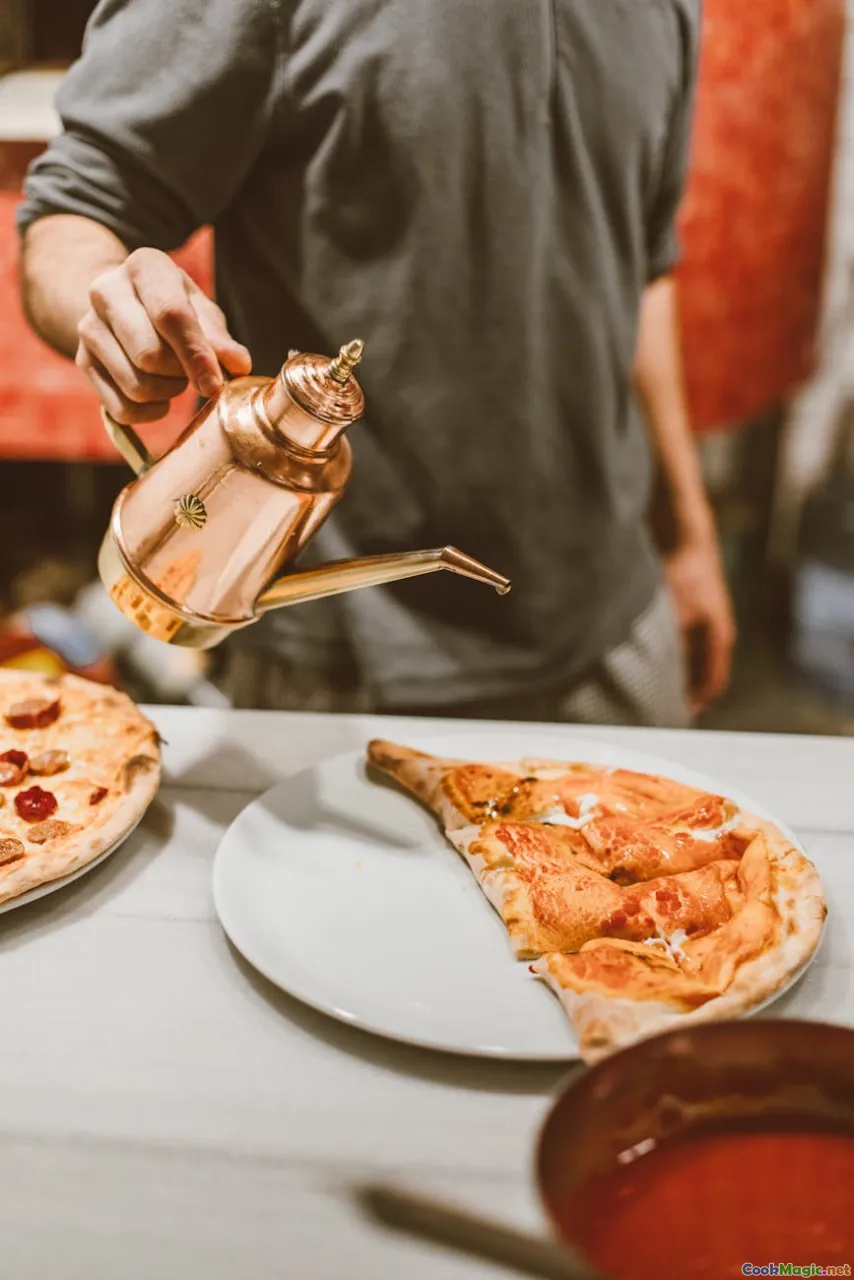
Brunost is the culinary sleight of hand at the center of Norway’s dairy canon. Rather than discard the whey left over from cheesemaking, Norwegian cooks cook it. For hours. As the water steams away, lactose darkens, proteins tighten, and the liquid thickens into a glossy, coppery mass that will set when cooled. Brown cheese is preservation disguised as candy.
It is not merely sugar. The Maillard reaction brings in roasted, malty notes; the mineral salts dissolved in whey emphasize a savory edge that keeps brunost from collapsing into dessert. Ekte geitost, made entirely from goat whey, picks up a pronounced barnyard character—think browned butter with a goat-song—and a tingle that leans toward salty licorice. Gudbrandsdalsost is smoother, with an almost hot-chocolate sweetness and a quiet echo of cheddar on the finish.
Cooking brunost at home is eminently possible if you have patience and an afternoon. Start with clean, fresh whey. A wide, heavy pot helps evaporation. Some cooks swear by copper; others find a heavy stainless pot more forgiving. Bring the whey to a lively simmer and skim the foam. The fragrance will shift from milky to malty to caramel as the hours pass. Resist scorching by scraping the bottom, stirring with a flat-edged wooden spoon, and lowering the heat as it thickens. When a spoon dragged through the pot leaves a trail that slowly closes, turn off the heat. Beating in cream will soften it into fløtemysost. Without cream, it will set firmer, closer to ekte geitost. Pour into a buttered loaf pan. The next morning, turn it out and shave a translucent slice—watch the light swim through it—and taste. It should cling to the palate like fudge, then melt away leaving a smoky sweetness.
Why add brunost to sauce? Because it behaves like a complex stock reduction and a spoonful of caramel at once. In game sauces for moose or reindeer, a thin slice melted into the pan juices emphasizes the meat’s iron while taming any bitter char. In a meatball gravy, brunost lends body and a sheen you would otherwise need hours of simmering to achieve. You can taste the seter kitchen in that final gloss.
Cream as Sauce, Seasoning, and Strategy
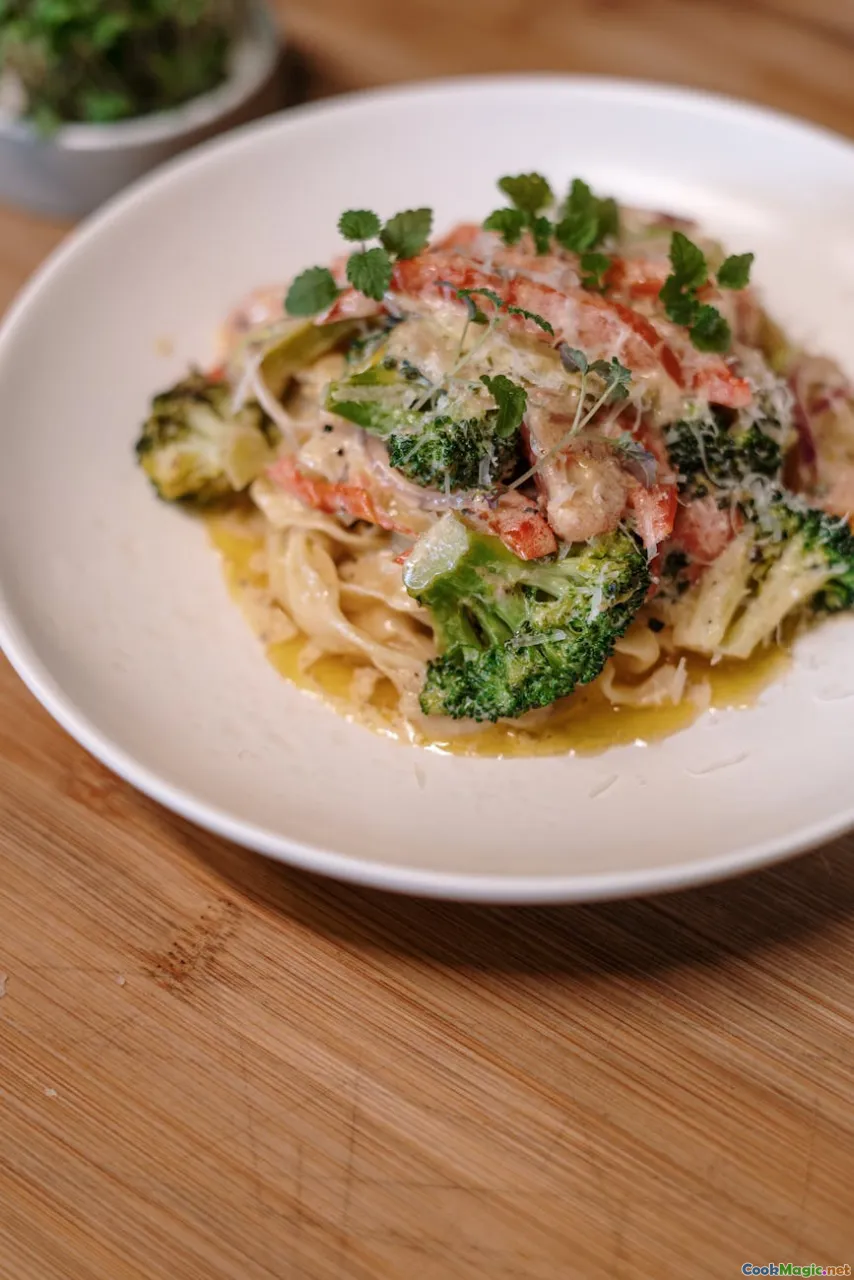
Norwegian cooks do not drown food in cream; they tune with it. A spoonful of rømme can pull a stew into focus the way a squeeze of lemon does in Mediterranean cooking. Consider the dishes where cream is not indulgence but structure.
-
Finnbiff with cream. Thin shavings of reindeer or venison seared fast in an iron skillet, deglazed with a splash of water or stock, then simmered with cream until the meat slackens into tenderness. Crushed juniper, a bit of thyme, maybe a ribbon of brunost in the sauce for depth. Serve with mashed potatoes so loose they slump, and lingonberries to prick the richness. The cream here binds the wildness and spreads the meat’s flavor across each bite.
-
Fiskesuppe, the mild fish soup of the coast. In a white stock fragrant with leek and celery, you whisk in cream and perhaps a ladle of milk to achieve a cloud-white broth that barely trembles. Into that bath go cubes of cod, pink commas of shrimp, ribbons of carrot. Finish with a quick sweep of dill and a spoon of rømme. The silkiness is not lavishness; it is a frame that allows the sweetness of seafood to stand unshouted.
-
Rømmedressing for smoked salmon. Rømme with grated horseradish, lemon zest, and chopped chives spooned beside smoked or gravlax salmon on flatbread. The sour cream’s lactic tang does the balancing work a wine pairing might do elsewhere.
-
Chanterelles with cream. In late summer, chanterelles hit the markets golden as lion’s fur. Fry them with butter until they release juice and take on a light nutty edge, then fold in cream and reduce to a gloss. Spoon over toast or alongside roast chicken. The aroma—apricot, forest floor, warm cream—turns a small plate into a feast.
Cream acts as a strategy against brittleness: brittle weather, brittle lean cuts, brittle fish. It rounds the corners of the climate.
Breakfast to Bunad: Dairy in Ritual and Celebration

Ritual foods in Norway are often dairy-forward, comfortable and celebratory at once. The most famous is rømmegrøt, sour cream porridge. It is a bowl of paradox: spare ingredients—sour cream, flour, milk, salt—becoming opulent. The process matters. You warm sour cream until it beads, stir in flour to coax out butter, then fold in hot milk until the porridge loosens and turns glossy. It is served hot with a crater for butter, and a comet’s tail of cinnamon sugar over the top. In some families, thin slices of cured meat such as fenalår sit alongside—a salt counterpoint to the sweet. You taste both feast and field; rømmegrøt was seter food and wedding food, holiday food and haymaking food.
On 17 May, Norway’s constitution day, dairy is everywhere though it rarely announces itself. The smell of waffles—heart-shaped, soft at the edges—puffs through school yards and parade routes. Batter made with kulturmelk and a bit of melted butter cooks into a tender waffle that tears in soft shreds when you pull it apart. The toppings are not optional, they are identity: a dab of rømme and a stripe of strawberry jam; brunost shaved thin enough to curl; a slice of brown cheese with butter, the icons sharing one square.
There is a very particular happiness to ferries that cross the fjords, a happiness that smells like griddle and caramel. Sveler, thick pancakes made with kulturmelk and a hint of baking soda, are served warm with butter and brunost or with a smear of prim. Clouds gather and part in the mountain-scape, the ferry horn calls, and you burn your tongue cheerfully on a corner of sweet, steaming svela.
Christmas tables set out riskrem—rice porridge folded with whipped cream and served with red berry sauce—and, in many families, multekrem, the quiet luxury of whipped cream stirred through cloudberries. The berries smell of apricot and spruce tips; the cream tempers their sharpness and sets them gleaming. Somewhere on that same table, a rustic loaf sits with a deep dish of butter softened to room temperature, and crisp flatbrød stands ready for scoops of blue cheese or whipped rømme and herbs.
If you travel east into the valleys, you may meet pultost on holiday spreads, crowned with caraway. In some kitchens, gomme becomes dessert with lefse, the potato flatbread that looks like lace when held to the light. None of these foods are anxious about being humble. Dairy carries the warmth of the gathering.
Coastal Milk, Mountain Milk: A Landscape of Taste
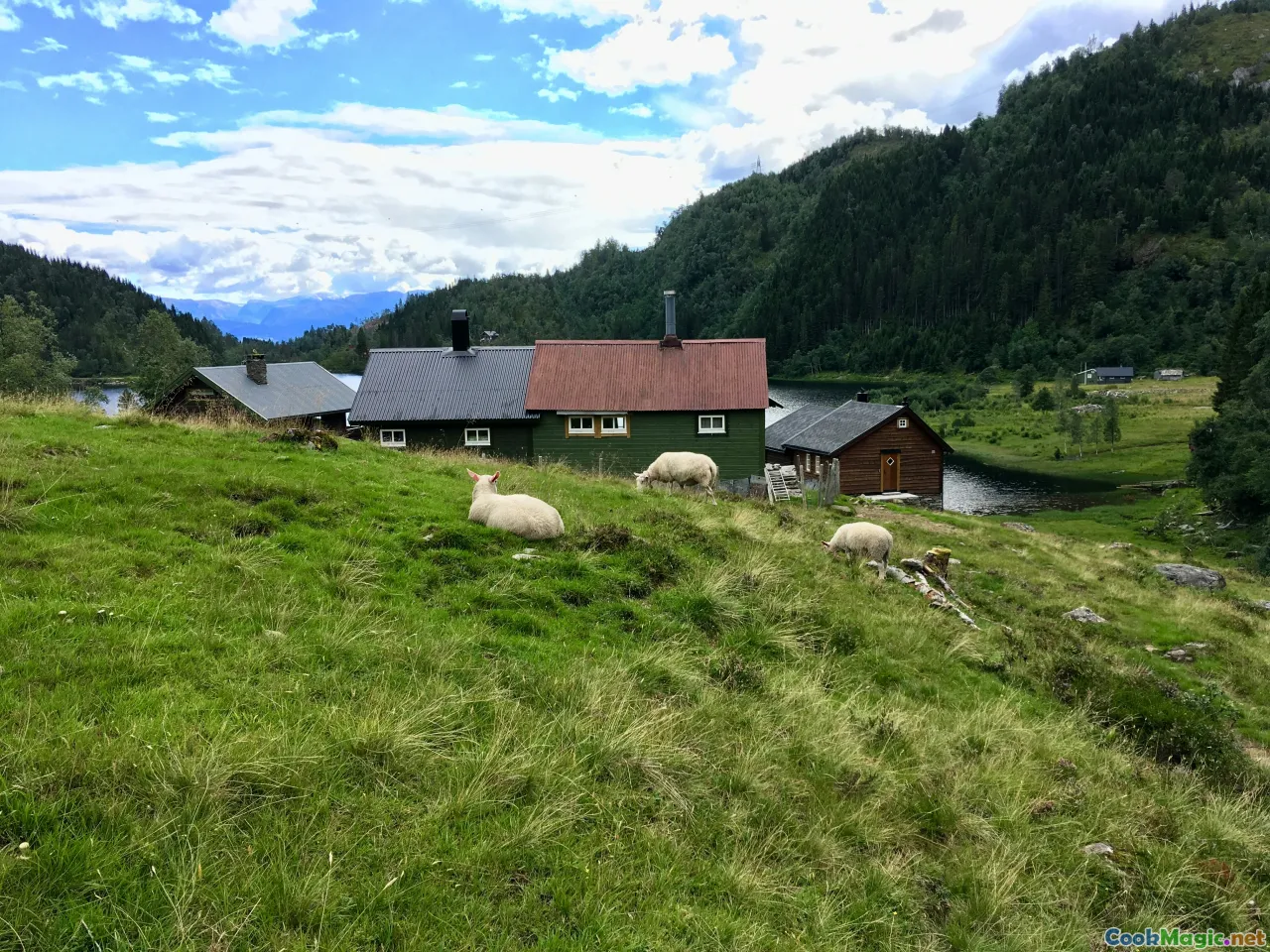
Norway is long and folded, and the taste of dairy tracks with the fjords and plateaus.
-
Jæren’s butter is bright and clean. The southwest’s mild climate and low fields near the sea give cows lush grass nearly year-round. Butter from this region is deeply colored in summer, with flavors that slide toward fresh almond and clover.
-
Røros stands as a shorthand for thoughtful dairy. The Røros Dairy’s rømme and butter are benchmarks: tangy, thick, with aromas that float between yogurt and a morning in a hay barn. Their culture resonates in the cream; Røros products behave predictably in sauces and baking, which is culinary gold.
-
In Nordland and Troms, goat’s milk takes a starring role. The cheeses go pungent faster, the brunost shouts a little louder, and the pultost feels more at home. You can taste the sharp, mineral lick of the sea-sprayed mountain herbs the goats nibble.
-
Trøndelag and Gudbrandsdalen are brunost heartlands. Gudbrandsdalsost is named for its home valley, which not only birthed a product but a way of thinking about thrift and flavor entwined.
-
The artisan scene is alive from the west coast to the east. The deep blue award ribbon around Tingvollost’s Kraftkar—a blue cheese crowned world champion in 2016—is both a surprise and not. Its cream is luxuriously dense, its blueing delicate but complex, like a well-aged whiskey that somehow carries the memory of fresh milk.
When you cook with these regional products, the differences are as practical as they are poetic. Rømme from a farm with high butterfat will thicken a pan sauce with speed; a leaner sour cream requires more patience and less heat. Goat whey brunost needs only the tiniest shaving to shake a gravy into complexity; a milder fløtemysost can be added generously without tipping the dish.
Fiskesuppe and the Northern Palate: Pairing Dairy with the Sea
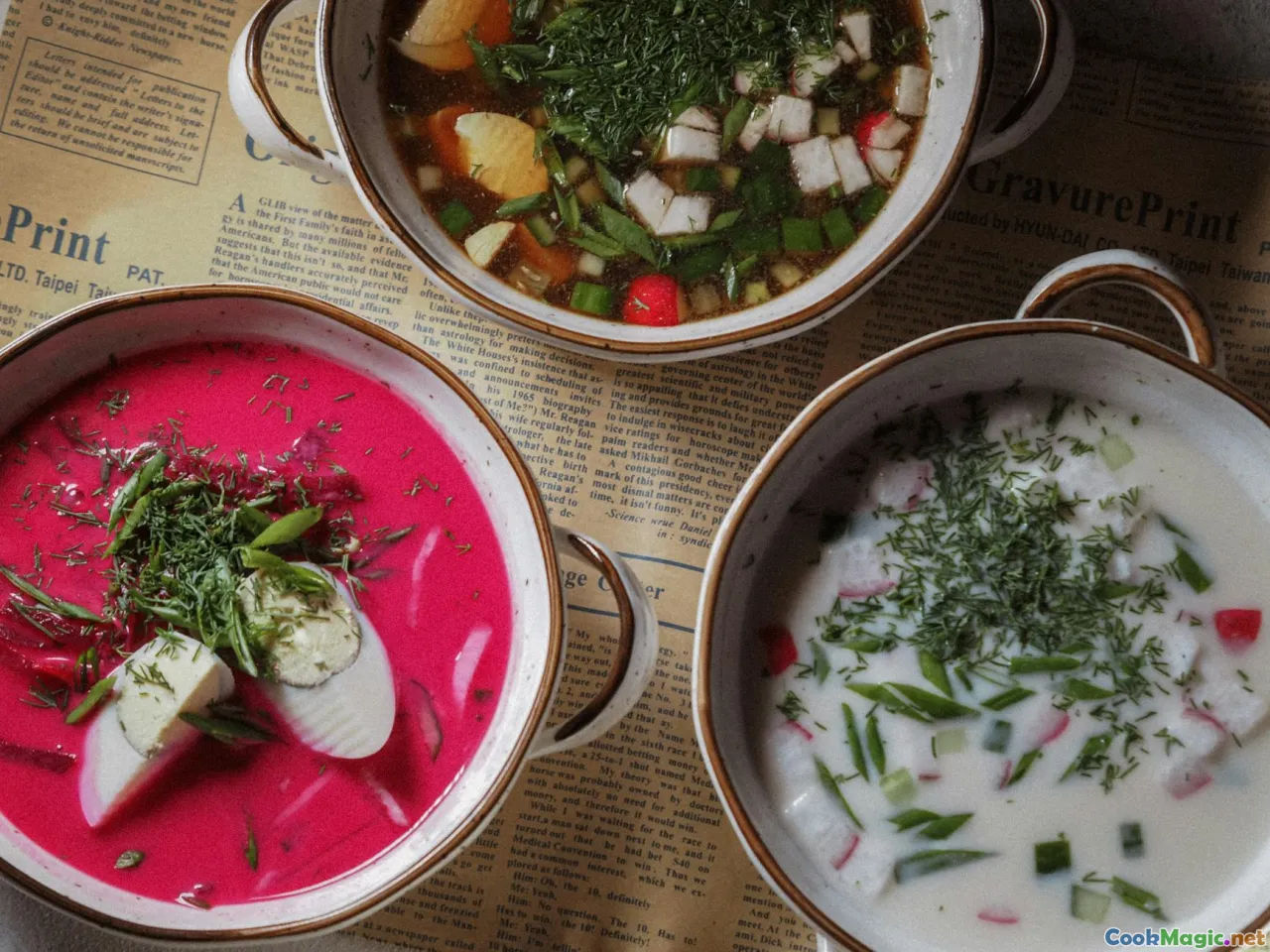
Sea and milk sound strange together until you stand on a dock in Ålesund at dusk and feel the wind brush cold across your knuckles. Norwegian sea cooking reads as spare but it is balancing extremes: cold water, lean fish, simple vegetables. Dairy acts as the bridge.
Consider fiskesuppe, not the bisque of Marseille or the chowder of Maine, but a Norwegian bowl where the broth is pale as morning fog and the vegetables are cut into ribbons. You begin with a stock made from fish bones and onion, a whisper of bay leaf. Strain, then slip in cream and a splash of milk, raising the heat only until the surface shivers. Salt is generous because cream dampens salt perception. Carrots sketch orange arcs in the bowl, celery goes glassy. Cod, pollock, or saithe cut into modest cubes murmurs sweetness into the broth as it cooks for just a minute or two. Finished with dill and a spoon of rømme, the soup tastes clean and substantial all at once, a scarf against the wind.
Milk shows up in fish cakes—fiskekaker—where it helps emulsify ground white fish into a bouncy, tender batter. A little cream added to the mixture polishes the texture. Serve them with a quick rømmedressing and lemon, and you understand how dairy can be architecture.
There is a lovely old pairing of smoked salmon with sour cream and chopped red onion on flatbrød. The cream tames the smoke and salt; the onion pricks the fat. This is not plating flourish; this is everyday engineering.
Even in humble gratins, milk and cream open space. Fiskegrateng, with its béchamel base, bathes leftover fish and macaroni in a rich, comforting sauce. Nutmeg is the scent of the kitchen at five o’clock; buttered breadcrumbs bake to a brittle top that shatters under the spoon. It is a weekday dish shaped by thrift that feels like a treat.
Butter, Bread, and the Quiet Luxury of Everyday
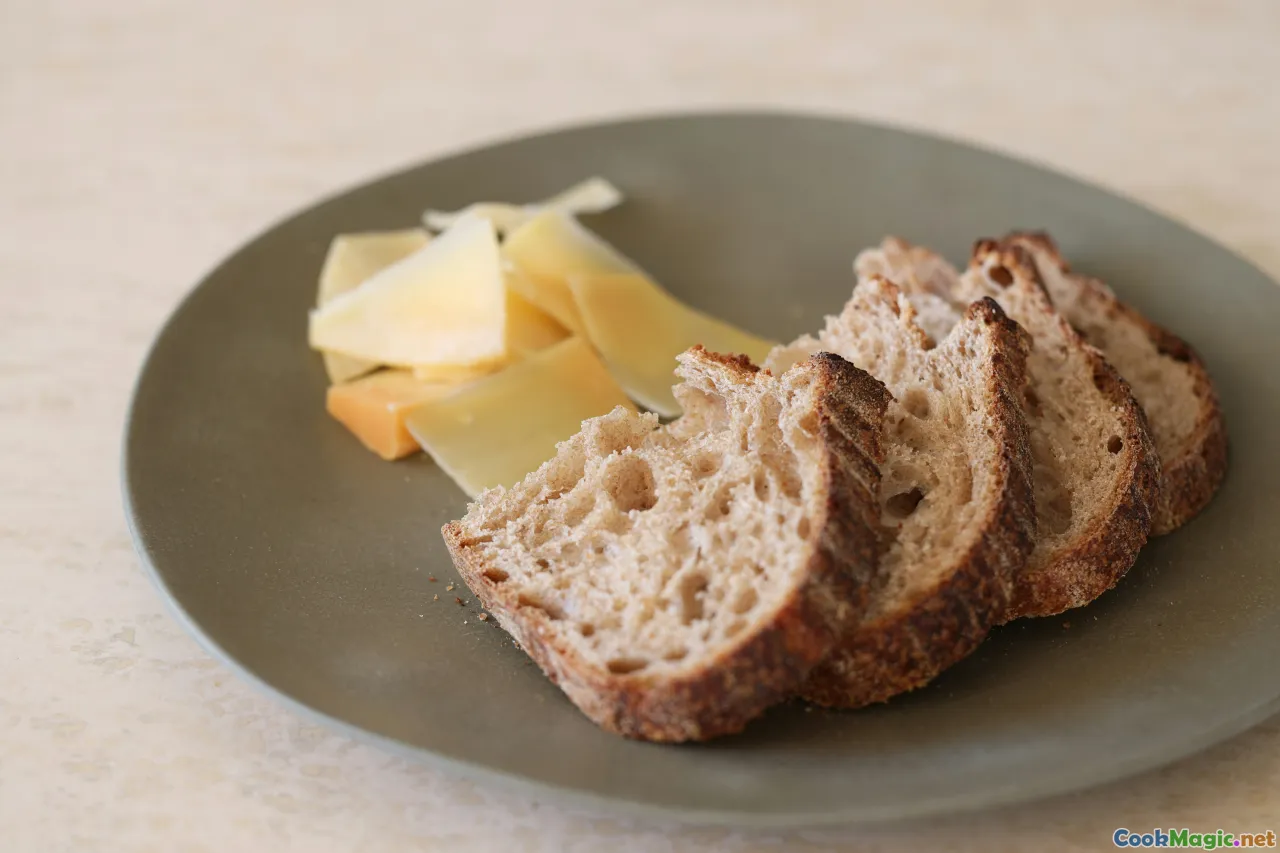
If there is one constant in Norwegian cooking, it is the presence of good butter on the table. Not flamboyantly salty, not perfumed with herbs—just butter that tastes of cream, hours old, spoon-soft and inviting. Spread it on flatbrød and it seeps into the tiny bubbles, glistening. Put it on rugged rye bread and the contrast is a textural revel: the bread’s dense chew against the butter’s cool silk.
I think of butter as a condiment here, used almost like olive oil in Italy. A pat finishes a pan sauce off the heat to bring a sheen, a salted slip of fat that helps aromas bloom. A generous spread on warm waffles is the simplest dessert. Stirred brown in a skillet and splashed with a spoon of rømme, butter becomes a sauce for boiled potatoes that rivals anything from a Michelin dining room.
Knekkebrød—crispbread—loves dairy. Brunost’s sweetness pops on its nutty surface; a smear of Snøfrisk and a strip of cucumber is the kind of breakfast that convinces you to slow down. Try whipping butter by hand with a little brunost grated in, a pinch of salt, and just enough hot water to relax it. The result is a tawny, impossibly spreadable butter that tastes like toasted milk candy and sits handsomely next to smoked mackerel.
How To Stock a Norwegian Dairy Larder Abroad
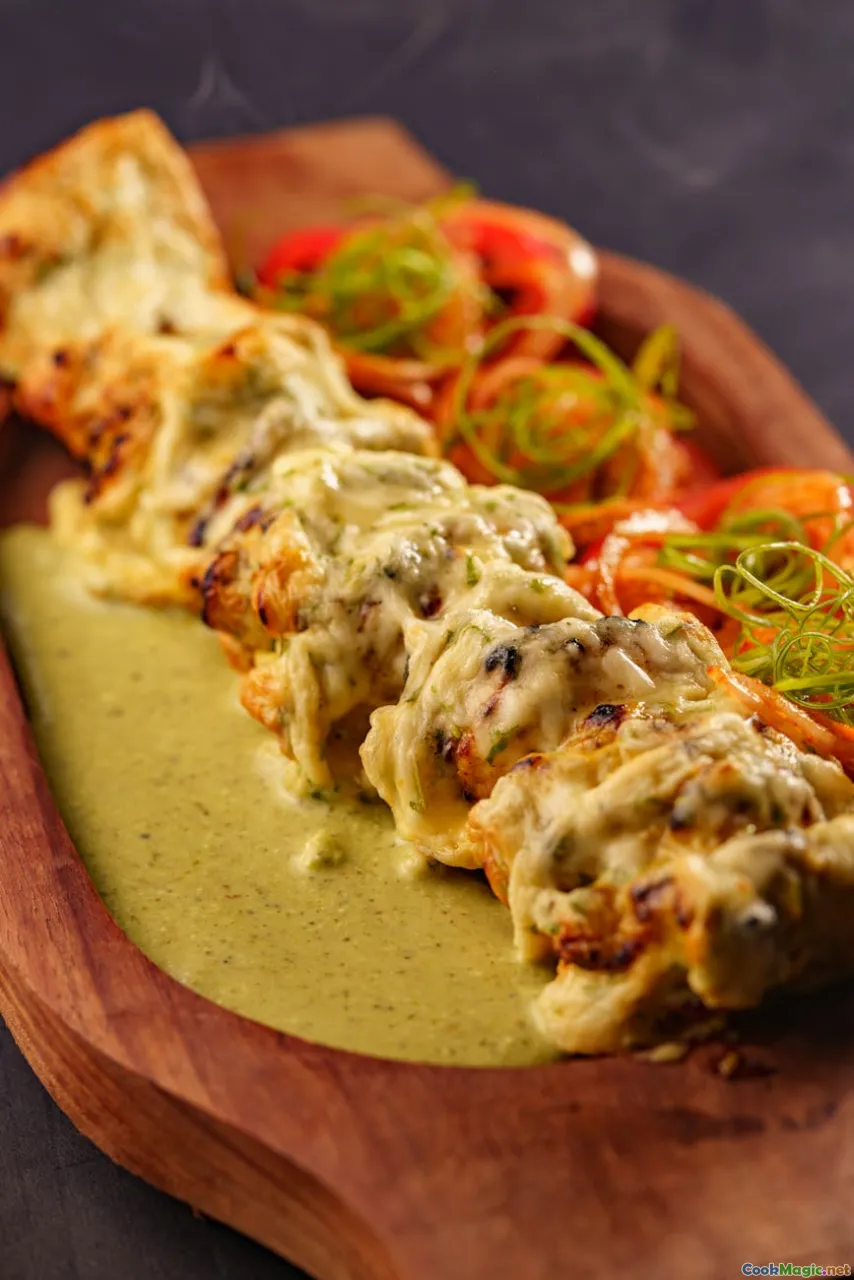
Cooking Norwegian food outside Norway is entirely doable with smart substitutions and a few kitchen tricks.
-
Rømme substitute. Use the thickest sour cream you can find. If it seems thin, strain it through cheesecloth for an hour in the fridge. In a pinch, mix equal parts crème fraîche and sour cream for a balance of tang and fat.
-
Kulturmelk stand-ins. Kefir is the closest cousin. Full-fat buttermilk works too. If both are unavailable, stir a tablespoon of lemon juice or white vinegar into a cup of milk and let sit for ten minutes, then whisk in a spoon of yogurt for extra body.
-
Brunost alternatives. Some specialty stores now carry brunost; look for Gudbrandsdalsost or fløtemysost. If unavailable, make prim at home by simmering leftover whey from ricotta or paneer until thick and sweet. A small cube of dulce de leche whisked into a gravy will not mimic brunost, but it will hint at the caramel depth it gives.
-
Butter matters. Choose cultured butter if possible; its tang echoes Norwegian smør. If you only have sweet cream butter, a tiny squeeze of lemon at the finish can mimic the brightness cultured butter brings.
-
Cheese stand-ins. Jarlsberg is widely available and a good all-purpose melt. For Norvegia, try a young Gouda. For Snøfrisk, a soft goat cheese like chèvre whipped with a splash of cream brings you close. For Nøkkelost, hack it: mix diced mild cheese with a pinch of caraway and a pinch of ground clove; let it rest overnight.
-
Røros-style cream. For sauces that need the sturdiness of Norwegian sour cream, blend equal parts crème fraîche and heavy cream; the higher fat helps prevent splitting.
Most of all, embrace the principle: dairy used not as a blanket, but as an accent, a brightener, a preserver of summer in a northern year.
Three Dishes To Cook This Weekend
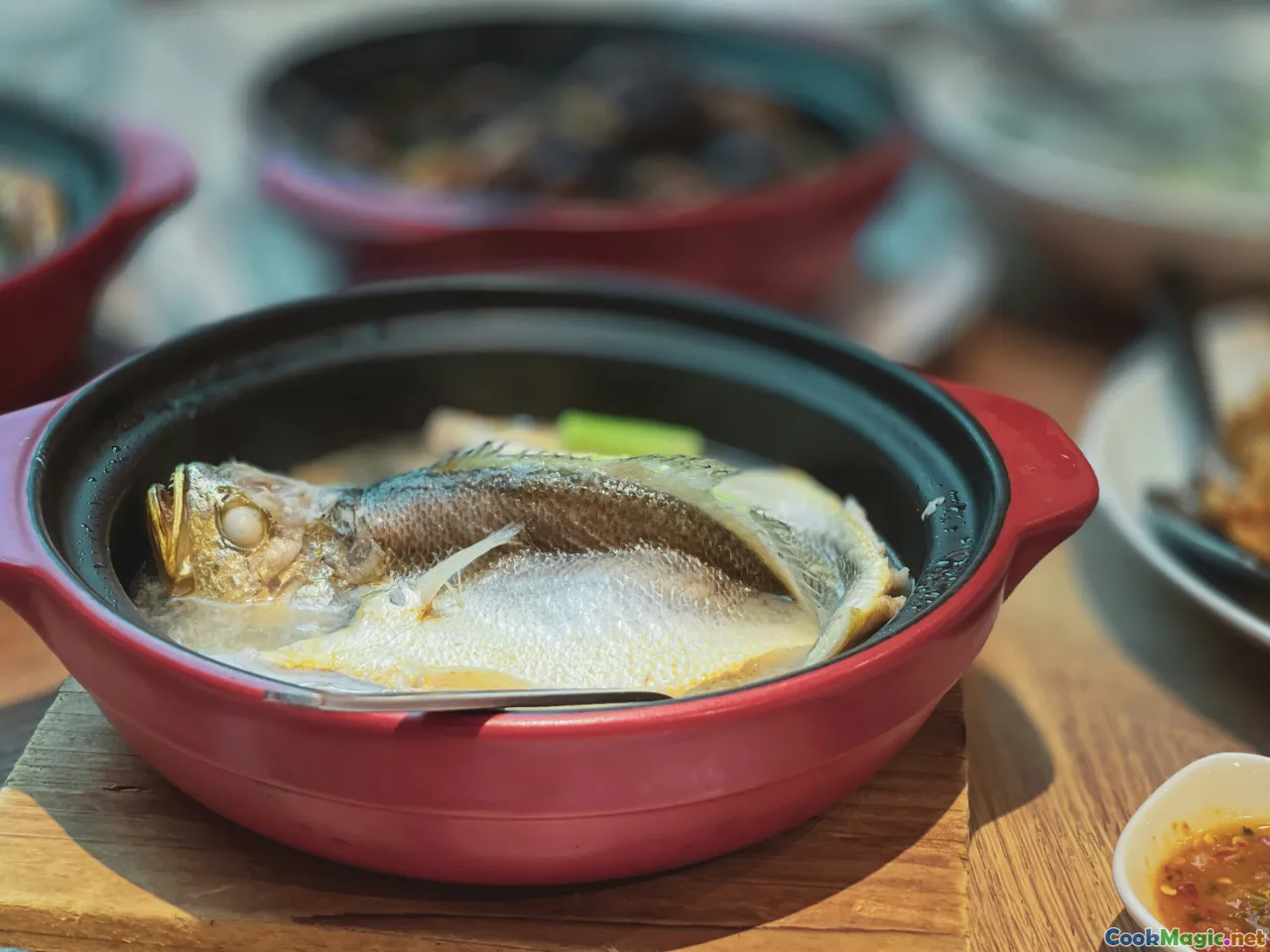
This trio brings Norwegian dairy to the front of the stove. They are not fussy, but they reward attention.
Rømmegrøt, sour cream porridge
Serves four
Ingredients
- 3 cups full-fat sour cream
- 1 cup all-purpose flour
- 3 cups whole milk, heated until just steaming
- 1 generous teaspoon fine salt
- 4 tablespoons butter, for serving
- Cinnamon sugar and optional cured meat to serve
Method
-
Put the sour cream in a heavy pot over medium heat. Bring to a bare simmer, stirring often. After several minutes, you will see small beads of butterfat appear. Keep the heat modest; do not boil hard.
-
Sprinkle in half the flour while stirring. The mixture will thicken, and more butter will float to the top. Skim and save the butter. Add the remaining flour and cook two minutes, stirring constantly. You want the raw flour taste gone.
-
Begin adding the hot milk in half-cup increments, whisking well each time. The porridge will loosen, then tighten. Keep the heat medium-low; patience is the point. Once all the milk is in, cook for 5 to 8 minutes, stirring, until glossy and thick but spoonable.
-
Season with salt. Serve in warmed bowls with a spoon of the reserved butter melting in a crater on top, a shower of cinnamon sugar, and thin slices of cured meat on the side if you like. Eat hot. The taste should be sweet-sour, nutty, and deeply soothing.
Finnbiff, reindeer stew with cream
Serves four
Note: Substitute thinly sliced venison or even beef if reindeer is unavailable.
Ingredients
- 1 pound reindeer or venison, sliced very thin (partially frozen meat slices best)
- 2 tablespoons butter
- 1 onion, thinly sliced
- 8 ounces mushrooms, sliced
- 1 teaspoon crushed juniper berries
- 1 teaspoon thyme leaves
- 1 1/2 cups heavy cream
- 1/2 cup stock or water
- Optional: a thin slice of brunost
- Salt and pepper
Method
-
Heat a heavy skillet until very hot. Add half the butter, then half the meat in a single layer. Sear quickly, 1 minute per side, until browned. Remove to a bowl. Repeat with remaining butter and meat.
-
Lower heat to medium. Add onion and mushrooms; cook until tender and lightly browned. Scrape the fond from the bottom of the pan.
-
Return meat and any juices. Add juniper, thyme, stock, and cream. Bring to a gentle simmer; do not boil hard. Cook 5 to 8 minutes until the sauce thickens slightly and the meat is tender. Swirl in the thin slice of brunost if using; it will melt into a ruddy glaze.
-
Season. Serve with mashed potatoes, lingonberry jam, and steamed cabbage or green beans.
Fiskegrateng, fish gratin with béchamel
Serves six
Ingredients
- 1 pound cooked flaky white fish (cod, pollock), flaked
- 2 cups cooked macaroni or small pasta
- 3 tablespoons butter
- 3 tablespoons flour
- 2 cups milk, warmed
- 1/2 teaspoon grated nutmeg
- 3 eggs, separated
- 1/2 cup grated mild cheese (Jarlsberg or similar)
- Salt and white pepper
- Breadcrumbs and butter for topping
Method
-
Heat oven to 375°F. Butter a medium baking dish.
-
Make a béchamel: melt butter in a saucepan, stir in flour, cook 2 minutes. Whisk in warm milk gradually. Simmer until thick and smooth. Season with salt, white pepper, and nutmeg. Remove from heat. Let cool slightly, then whisk in egg yolks and cheese.
-
Beat egg whites to soft peaks. Fold into the sauce. Gently fold in fish and macaroni. Pour into the prepared dish. Top with buttered breadcrumbs.
-
Bake 25 to 30 minutes until puffed and golden. Let rest 10 minutes before serving.
Each dish teaches a piece of Norwegian dairy wisdom: extract flavor through patience, enrich with restraint, use acid and fat in conversation.
Cheese Boards, the Norwegian Way
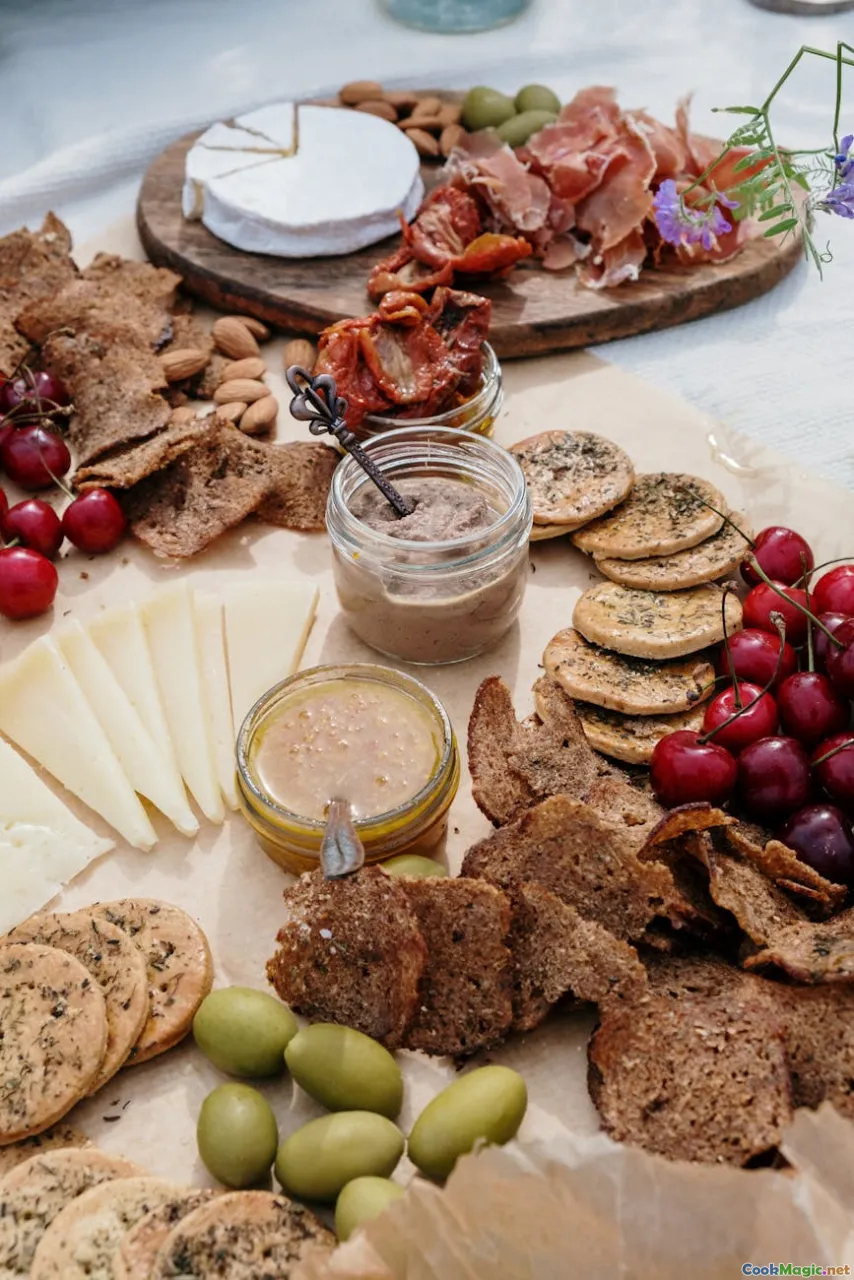
Constructing a cheese board in Norway is less about excess and more about resonance. Choose three to five cheeses that show a range of texture and origin without fighting one another.
-
A slice of brunost to start, cut thin, almost translucent. Its color invites; its sweetness disarms.
-
A mild everyday slicer like Norvegia, for comfort and breadth.
-
A blue like Kraftkar or a local blue of your region, for the drama: cream dense as frosting and veins that smell of cellars and rain.
-
A goat cheese such as Snøfrisk or a small, bloomy-rind chèvre, to bring bright acidity.
-
Optionally, a spiced cheese like Nøkkelost for curiosity—a whisper of clove-heat and caraway warmth.
Pairings are spartan but exacting. Cloudberry jam or lingonberry jam provides high, tart notes. Flatbrød adds crunch and neutrality. Knekkebrød contributes a nutty grain base. Butter is a condiment here; a pat on flatbread with blue cheese is ridiculous in the right way. A small glass of aquavit, caraway-scented and clean, or a beer with a firm backbone can make the whole board cohere. Coffee works astonishingly well; the bitters complement the sweet caramel tones of brunost and the salt of aged cheeses.
Think also about texture: a bowl of sliced cucumbers dressed with a quick pickle brine, a heap of walnuts, a few slices of pear. You do not need honey or fig jam; those are imported instincts. Keep it local; let the dairy speak.
Culture in a Cup: Coffee, Waffles, and Kos
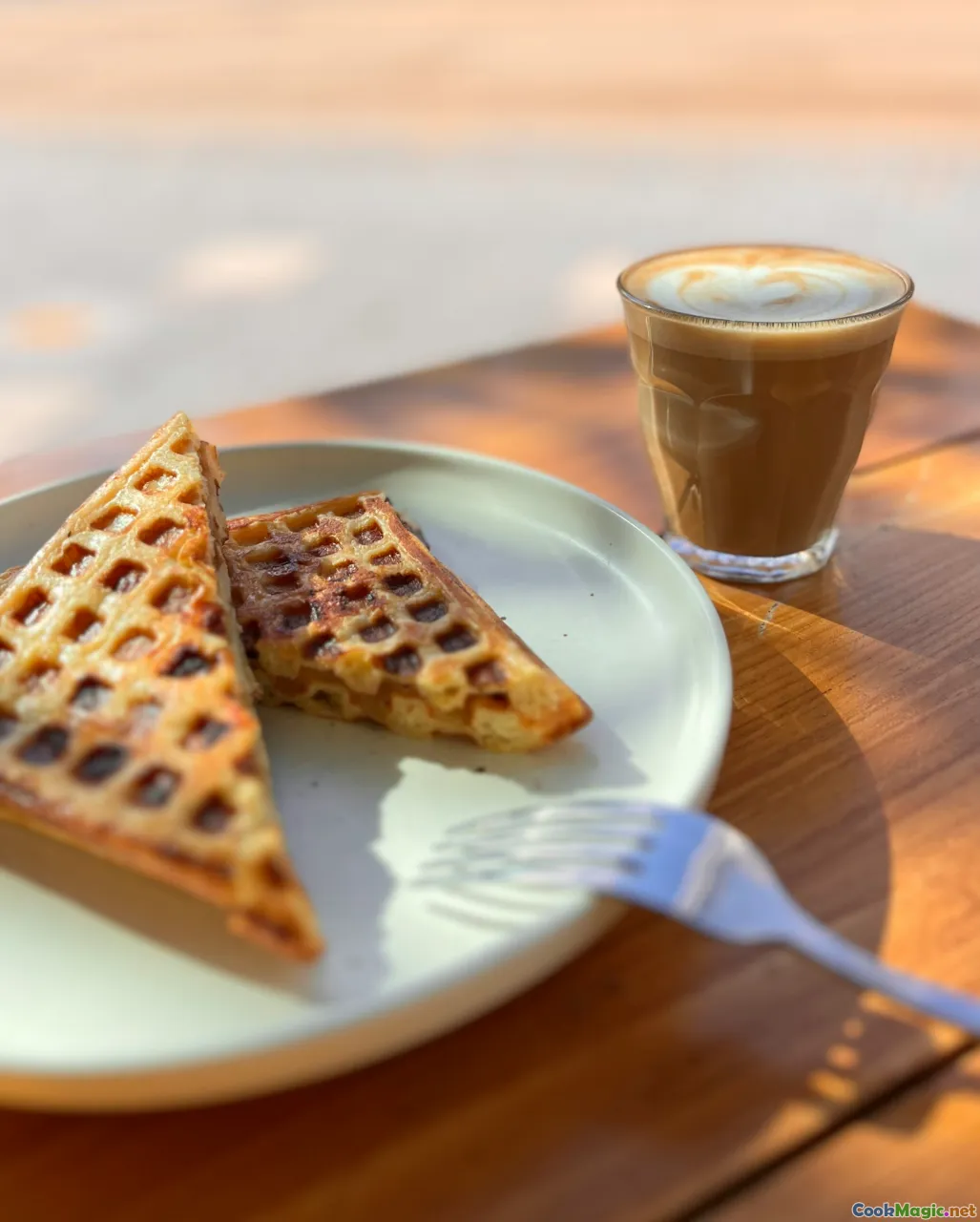
Norwegians drink coffee with a devotion that borders the spiritual. It is not just the coffee; it is what surrounds it—kaffemat, the little bites and sweets that accompany the cup, and the feeling of kos, that untranslatable blend of calm, candlelight, good company, and something sweet.
Dairy is threaded through this ritual. Whipped cream crowns strong coffee in mountain cabins, a tiny celebration after a long ski. Waffles, served at any hour, are softened and scented by kulturmelk in the batter, then devoured with rømme and jam. In old farmhouses, you may still find boiled coffee—kokekaffe—served in thick cups that warm your hands. The smell of coffee and buttered waffle is, in a very real way, a promise that everything will be fine for at least the next hour.
There is even a quiet improvisation in how rømme shows up with baked goods. A scoop of sour cream on the side of a slice of warm apple cake makes the cake feel fresher, brighter. In sveler served on ferries, a blanket of brunost and butter holds in heat and perfume; a passenger licks their thumb, uses it to chase a ribbon of melted brown cheese across the paper plate, and smiles.
Sustainability and the New Norwegian Dairy

Contemporary Norwegian dairy operates in two overlapping spheres: the national cooperative and a flock of small artisans. TINE, the massive cooperative, collects milk broadly and keeps the shelves stocked; it also supports research on animal welfare and feed innovations to reduce methane. On the other side, small dairies like Avdem in Lesja, Rueslåtten in Hallingdal, Stavanger Ysteri on the west coast, and Tingvollost on Nordmøre turn milk into distinct expressions of place. Raw milk debates run quieter here than elsewhere, but the interest in minimal processing and pasture-forward milk is growing.
Sustainability in Norway is climate-specific. Long winters mean feed planning is a science. Farms invest in better silage, in winter-hardy legumes that boost protein without importing soy. Rotational grazing patterns are designed to prevent erosion on steep hillsides. The calculus is pragmatic: animals need to be comfortable; comfortable animals give better milk; better milk makes better butter and cheese.
Waste is an old enemy. Brunost is itself a sustainability story—whey transformed from a byproduct into an asset. Bakers use buttermilk left from butter making to moisten breads. Cooks tilt skillets to save every spoon of pan butter. The question of carbon footprint is complicated, but a Norwegian kitchen’s use of dairy shows a deep cultural bias toward making the most of what you have, a value rooted in winter as much as in virtue.
As a culinary writer, I think about flavor and ethics as if they were conjoined twins. The most persuasive sustainability argument is often deliciousness. When you taste butter from cows that grazed on a hillside of wild clover and pine shade, when a spoon of rømme doubles as the acid in a sauce and the milk fat that carries aroma, you eat more carefully and gratefully. The culture changes at the table first.
What Dairy Teaches About the Norwegian Palate
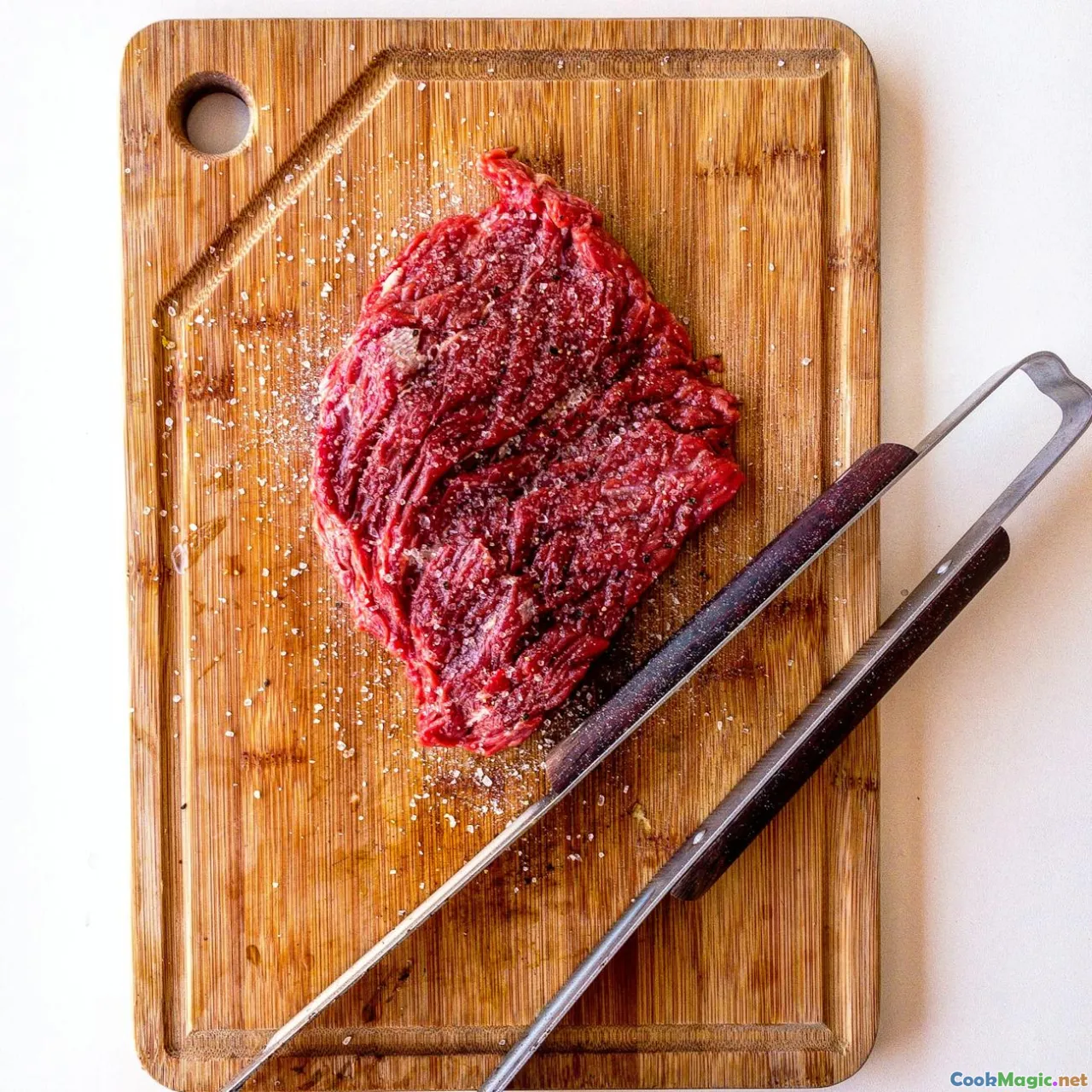
I have cooked in Oslo kitchens where the windows fogged from fish soup and in cabins where the only spoon was carved by someone’s great-grandfather. In both, dairy shaped the mood. Sour cream turned the pot friendly; butter traded in the smell of alchemy; brunost offered both thrift and theater. In a climate that demands both practicality and joy, dairy is a language fluent in both.
Norwegian cooking is not a story of abundance in the Mediterranean sense. It is a story of careful choices. A splash of cream instead of a longer stew. A shaved fragment of brown cheese instead of a cup of sugar. A cultured milk batter that makes a thin waffle feel plump. Those choices echo the seasons, the work of milking and haying, the laughter of ferry cafeterias, the quiet of winter kitchens that glow like lanterns.
Years after that first sip in Hardanger, I still carry the memory like a talisman when I cook. When I add rømme to a pan of chanterelles, I wait for the smell to tell me when the sauce is right—the moment when the mushroom’s apricot and the cream’s lactic tang harmonize and the kitchen smells like a small wooden room in the mountains with the door open to fresh air. That is the role of dairy in Norwegian cooking: not to smother, but to reveal; not to dominate, but to anchor. If you listen, the milk will tell you what the land wants you to taste.









